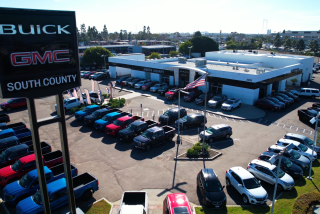Ford Tops GM in Quarter With Record $1-Billion Net
DETROIT â Detroitâs automotive pecking order--General Motors first, Ford second and Chrysler a distant third--is seldom challenged. But Ford did just that Thursday when, for one of the few times in its history, it reported a significantly higher quarterly profit than rival GM.
Buoyed by the success of its new intermediate-size Ford Taurus and Mercury Sables models in the American car market and by a recovery overseas, Ford posted record earnings of $1.078 billion for the second quarter, up 54.3% from last yearâs $698.7 million.
In contrast, GM--the worldâs largest industrial company with a tight lock on more than 40% of the U.S. car market--on Wednesday reported that it earned $977.7 million, down 15.7% from the $1.159 billion that it earned in the second quarter of 1985.
Chrysler, meanwhile, said Wednesday that it earned $488.2 million, down 18.1% from last yearâs profit of $596.4 million.
A Ford spokesman said that the last time Ford outperformed GM was at the start of the recession in the third quarter of 1979, when Ford earned $103 million, compared to GMâs profit of only $21 million. And, for the first time in 30 years, Ford had a higher first-half profit than GM, at least on a pretax basis. Ford reported a pretax profit of $2.889.7 billion for the first six months of 1986, compared to GMâs earnings of $2.736 billion.
âFord is on a roll,â said Scott Merlis, automotive analyst with Morgan Stanley & Co. âIts products are doing well, its inventories are in line and its profit margins are very strong.â
Merlis and other industry analysts, who widely praised Fordâs performance while expressing concern about GM, said they believe that the good numbers at Ford came from the basics--marketing successful products and improving cost control. At the same time, Fordâs big percentage gain over last year was due in part to the fact that its production levels were depressed during the second quarter of 1985, when it was retooling two major plants to produce its new Taurus and Sable.
This year, by contrast, those cars with the sleek shape, designed to compete with Audis and other European performance cars, are leading Fordâs recovery among upscale car buyers. From January through June, the company sold 149,480 Taurus-Sable models, adding sales among import-oriented consumers who probably wouldnât have considered other Ford products.
âThey have the full production of the Taurus-Sable now, whereas last year those plants were down for conversion to Taurus-Sable production,â noted Doug Laughlin, automotive analyst with Dean Witter Reynolds.
Merlis and other analysts believe that Ford should post near-record earnings of about $2.9 billion for the full year.
For the second quarter, Ford showed strong improvements both in the U.S. and overseas markets. The auto maker earned $792 million in the United States, up 29.6% from its profit of $611 million last year, while overseas it earned $286 million, its best quarterly performance outside of the United States since 1980. Last year, Ford posted foreign earnings of just $88 million.
The company also reported that it now has a huge cash cushion that could be used in a possible acquisition. Ford said it had $7.1 billion in cash and marketable securities on hand at the end of the second quarter.
But Ford still is having problems in the domestic car market. While its worldwide car and truck sales rose 14.3% in the quarter, the companyâs domestic passenger car sales are off 6.2% so far this year, despite the companyâs heavy use of costly sales incentives to lure buyers into its showrooms.
And Merlis warns that those discount financing programs could hurt Fordâs earnings.
âCosts are getting better at Ford, but they will need to keep cutting costs further if they are going to finance their sales incentives,â he said.






